The village life
Cycling through the fishing village of Seberang Pintasan in Terengganu is no easy feat. Although the route was relatively short (at 5km) and the roads were well-paved, I was in danger of getting separated from my group. The scene that formed the backdrop of our bike tour was distracting — I simply had to stop and snap pictures of the secluded Tanjong Bidara beach and the abandoned, lightning damaged huts that lined the coast. As a city dweller, I found the stillness astonishing and mesmerising.
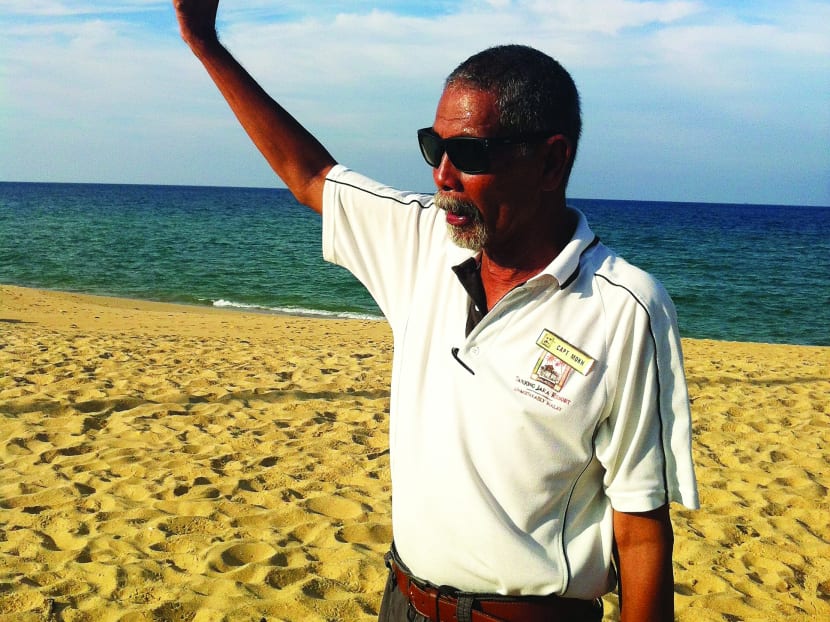
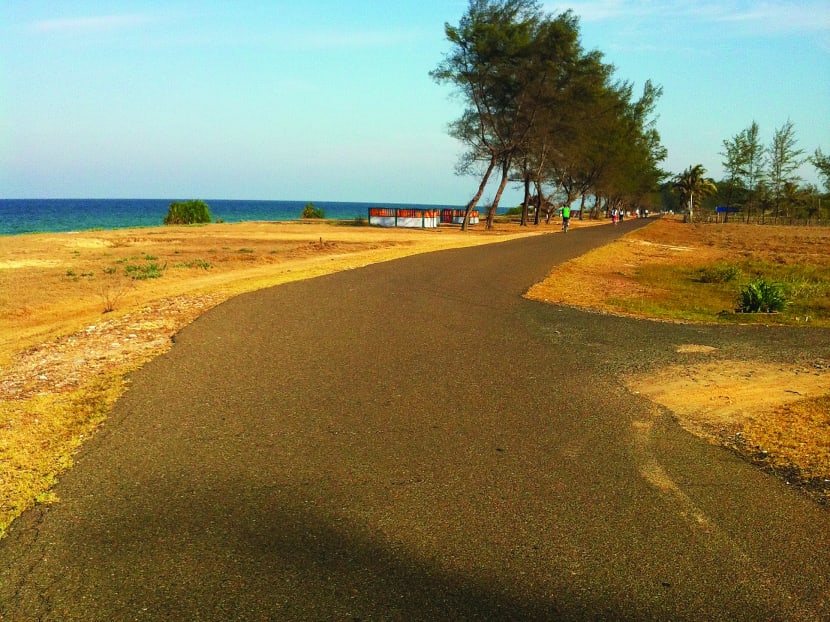
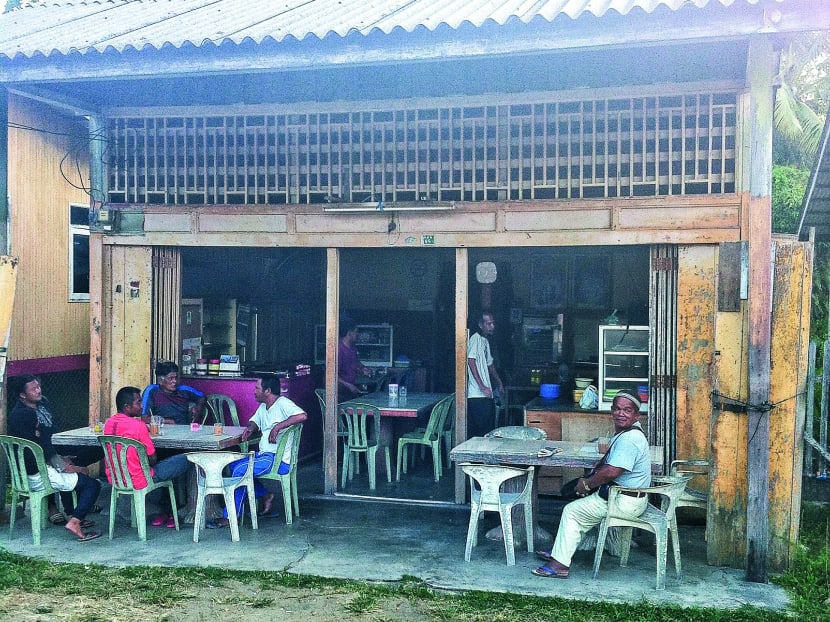
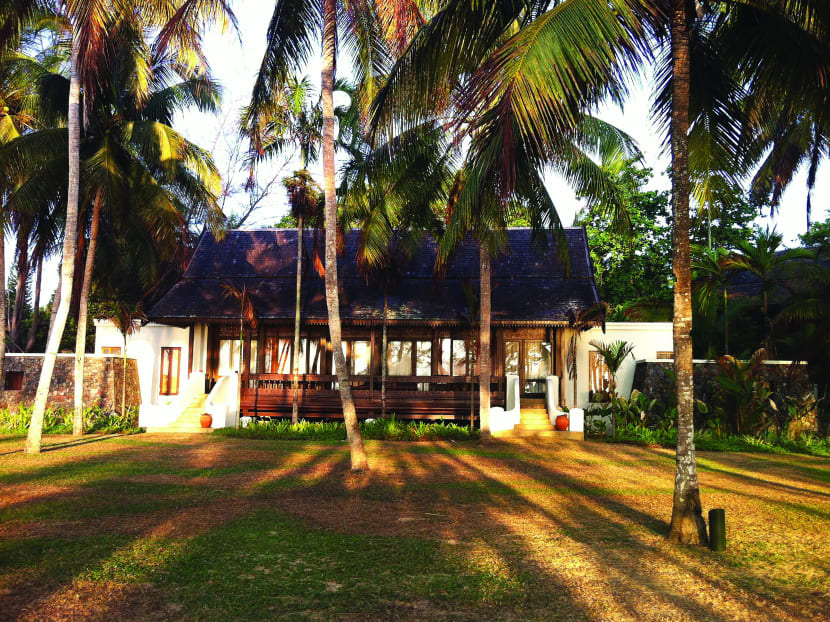
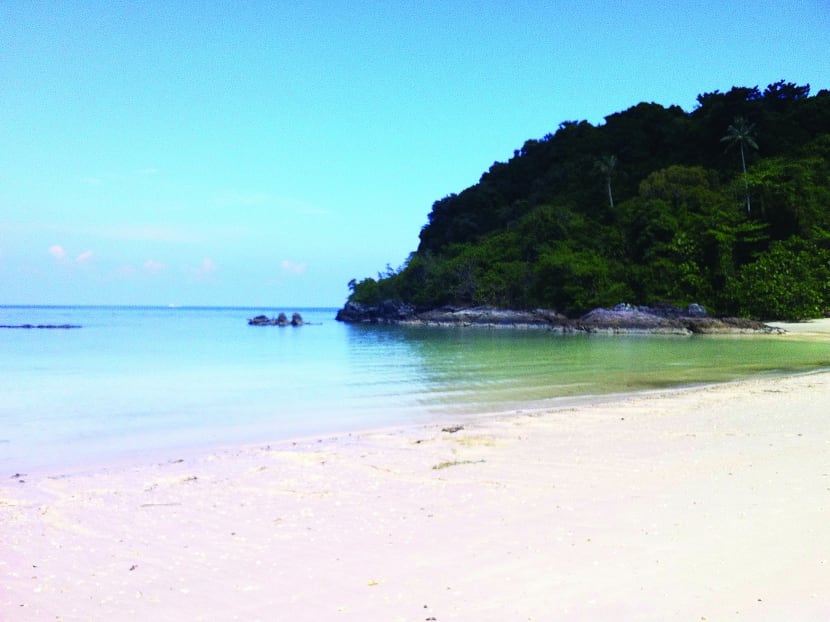
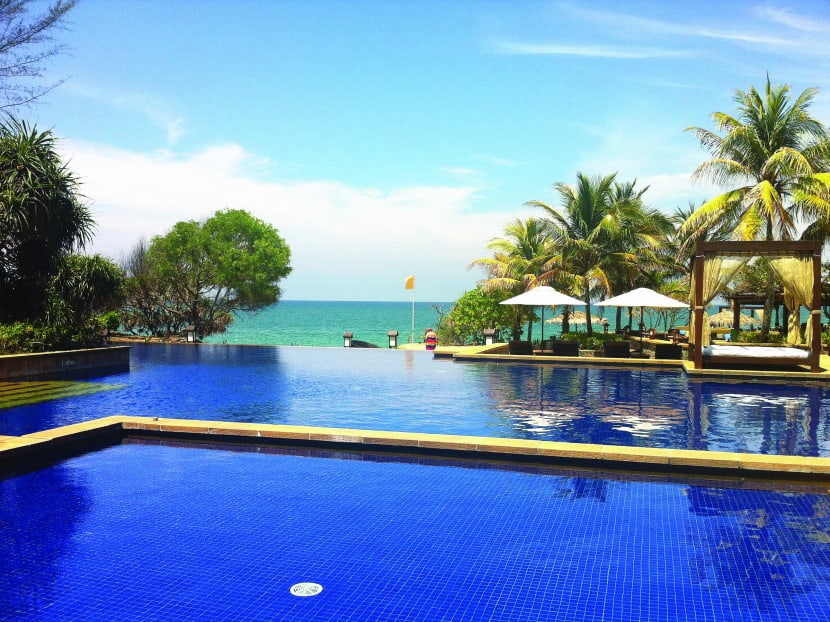
Cycling through the fishing village of Seberang Pintasan in Terengganu is no easy feat. Although the route was relatively short (at 5km) and the roads were well-paved, I was in danger of getting separated from my group. The scene that formed the backdrop of our bike tour was distracting — I simply had to stop and snap pictures of the secluded Tanjong Bidara beach and the abandoned, lightning damaged huts that lined the coast. As a city dweller, I found the stillness astonishing and mesmerising.
We were exploring a kampung of rustic, zinc-roofed wooden huts, where the skyline is no higher than three storeys. The highest building in the village — the primary school — is one of the few constructed from concrete. Cows and goats dawdled in the middle of the narrow lanes to graze, seemingly unruffled by our presence. Children paused their games to wave at us as we wheeled past them and the breeze from the South China Sea caressed our faces.
In a crumbling coffeeshop, where we stopped to have roti canai and local coffee, we noticed that almost all the diners were men. Our guide, the charming Captain Mokhtar Mohamad, a naturalist from Tanjong Jara Resort, told us that the village women here are extremely industrious.
“The men here are lazy,” he added bluntly.
He explained that while the men are busy catching up on the daily gossip, the women were at home preparing dinner. In the morning, the ladies would have collected the catch of the day from fishermen and sold it at the nearby Dungun market.
REMOTE ACCESS
When you are in Terengganu, it can seem like time has stopped. It is perhaps due to the fact that the state is still not a mainstay in the consciousness of international tourists, which adds to the allure of the region. It used to be that anyone heading here (particularly divers, because of the dive sites off the Terengganu coast) had to take a bus or transit onto another flight at Kuala Lumpur. It is now more accessiable as AirAsia has since introduced direct flights from Singapore.
Where to stay depends on your needs. For families, Rumbia Resort Villa located in the fishing village of Paka south of Kuala Dungun is ideal. Each tastefully furnished bungalow consists of living and dining areas, a kitchenette, three bedrooms and two bathrooms. It also houses three restaurants, sports and recreation facilities, a gym and a convenience store. For Robinson Crusoe-types who like desert island stays, sleep is just steps away from the colourful underwater scene at Tenggol Coral Beach Resort. Each room, while equipped with air-conditioning and hot water, is basic. The real draw of the resort is its location and relative seclusion.
For those looking to glam it up a little, there is the beautiful five-star Tanjong Jara Resort. Modelled after 17th century Malay palaces, the beachfront hideaway is a plush refuge of thatch-roofed houses and modern comforts. This is a place where kampung life meets luxury — think fragrant timber furnishings, cushy king-sized beds and spacious bathrooms. The resort is named after its location. The name “jara” comes from the local Terengganu dialect for “jail” (or “penjara” in Malay). However, the jail on that part of the beach was not one for humans but for tigers.
While it was tempting to remain at the resort to take full advantage of the two swimming pools or retreat to the oasis-like spa, I could not pass up the opportunity to explore Malaysia’s famous underwater scene. The well-known Redang Island may be located nearer to the gateway of Kuala Terengganu, but the lesser-known Pulau Tenggol is more pristine and deserted. The island, located 45 minutes by boat from Kuala Dungun, measures 3km by 2km. Despite its size, the site is a good jump-off point for snorkellers and scuba divers. There are over 20 dive sites around the island that afford divers of various aptitudes the opportunity to explore a range of seascapes. The dive season at Pulau Tenggol is from March to October, but if you want to see whale sharks and manta rays, our snorkelling guides recommend a visit at the start and end of the dive season, when sightings are common.
LOTS TO SEA
Wading into the warm, azure waters from the beach, I ducked my head underwater and encountered a kaleidoscopic array of marine life. I was pleasantly surprised at being able to observe such a wide range of fish and corals simply by snorkelling merely 30m from shore. Clownfish, bumphead parrotfish, barracuda, a baby black-tipped reef shark and a couple of turtles topped the list of marine animals sighted. I did not spot rays or whale sharks, but I left the island feeling extremely lucky, nonetheless. The turtles that live near the site’s House Wreck and Turtle Point are known to be shy.
Pulau Tenggol’s surrounding water body may be shallow enough for snorkellers but the area further out in the South China Sea is so deep that the main catch in Terengganu’s seaside towns is tuna. This explains why most of the local fare features the fish. The most well known is nasi dagang, a dish consisting of glutinous rice cooked with plain rice and served with tuna curry. Other specialties of the region include keropok lekor or fish sausage and sapat, a concoction of fish meat mixed with onion and ginger and barbequed over charcoals. Terengganu flavours are noted for their slightly sweet hints. Curries and sauces are often accentuated with a pinch of sugar or by the addition of pineapples — an influence from the region’s Thai neighbours.
Visitors can sample all these and more at the rotating night markets held at the villages surrounding Tanjong Jara. The largest is the Dungun village market held every Thursday where rows of makeshift stalls hawk snacks and meals alongside clothes and other household items. A souvenir from here might just be the thing to encapsulate all the good memories.
AirAsia flies to Kuala Terengganu three times a week.





